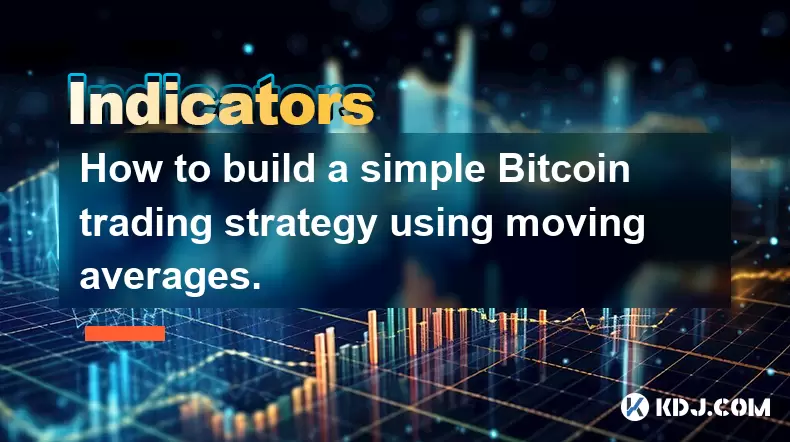-
 Bitcoin
Bitcoin $108,092.5658
-0.99% -
 Ethereum
Ethereum $2,546.4530
-1.12% -
 Tether USDt
Tether USDt $1.0000
0.01% -
 XRP
XRP $2.2676
0.12% -
 BNB
BNB $659.1616
-0.30% -
 Solana
Solana $148.8297
-1.97% -
 USDC
USDC $1.0000
0.02% -
 TRON
TRON $0.2874
-0.30% -
 Dogecoin
Dogecoin $0.1676
-3.64% -
 Cardano
Cardano $0.5765
-1.73% -
 Hyperliquid
Hyperliquid $37.2069
-6.18% -
 Bitcoin Cash
Bitcoin Cash $497.9918
-0.10% -
 Sui
Sui $2.8427
-2.26% -
 Chainlink
Chainlink $13.2689
-2.06% -
 UNUS SED LEO
UNUS SED LEO $9.0541
0.15% -
 Stellar
Stellar $0.2487
-0.92% -
 Avalanche
Avalanche $17.7710
-3.09% -
 Shiba Inu
Shiba Inu $0.0...01167
-1.28% -
 Toncoin
Toncoin $2.7488
-2.80% -
 Hedera
Hedera $0.1559
-2.28% -
 Litecoin
Litecoin $85.8945
-2.48% -
 Monero
Monero $316.0985
-2.09% -
 Dai
Dai $1.0001
0.02% -
 Polkadot
Polkadot $3.3481
-1.83% -
 Ethena USDe
Ethena USDe $1.0000
0.00% -
 Bitget Token
Bitget Token $4.2910
-3.04% -
 Uniswap
Uniswap $7.4131
-0.09% -
 Aave
Aave $280.9266
-2.67% -
 Pepe
Pepe $0.0...09816
-3.18% -
 Pi
Pi $0.4557
-2.29%
How to build a simple Bitcoin trading strategy using moving averages.
Jul 08, 2025 at 12:42 pm

Understanding the Basics of Moving Averages
Before diving into the creation of a Bitcoin trading strategy, it is essential to understand what moving averages are and how they function within technical analysis. A moving average is a statistical calculation used to analyze data points by creating a series of averages of different subsets of the full data set. In cryptocurrency trading, moving averages smooth out price data over a specific time period, helping traders identify trends and potential reversal points.
There are several types of moving averages, but the two most commonly used in Bitcoin trading are the Simple Moving Average (SMA) and the Exponential Moving Average (EMA). The SMA gives equal weight to all prices within the selected time frame, while the EMA places more emphasis on recent price movements. Understanding these differences is crucial when choosing which type of moving average to incorporate into your strategy.
The length or period of the moving average also plays a significant role. Shorter periods, such as 9-day or 20-day moving averages, respond more quickly to price changes, making them suitable for short-term traders. Longer periods, like 50-day or 200-day moving averages, are often used by long-term investors to gauge broader market trends.
Selecting the Right Time Frame
When building a Bitcoin trading strategy based on moving averages, one of the first decisions you need to make is selecting the appropriate time frame. This decision depends largely on your trading style—whether you're a day trader, swing trader, or position trader. Each style requires a different approach to analyzing moving averages.
For day traders, shorter time frames such as 1-minute, 5-minute, or 15-minute charts are typically used. These allow for quicker responses to market shifts and faster trade execution. Swing traders may prefer hourly or 4-hour charts, as they provide a balance between responsiveness and trend clarity. Position traders, who hold positions for weeks or even months, usually rely on daily or weekly charts.
It’s important to test different time frames with historical Bitcoin price data to determine which yields the best results for your strategy. Backtesting can help you see how well your moving average signals would have performed in past market conditions, allowing you to fine-tune your approach before risking real capital.
Setting Up the Moving Average Crossover Strategy
One of the most popular strategies involving moving averages is the crossover method, which involves using two moving averages—one fast (short period) and one slow (long period). When the fast moving average crosses above the slow moving average, it generates a buy signal, indicating upward momentum. Conversely, when the fast line crosses below the slow line, it suggests a sell signal due to downward pressure.
To implement this strategy effectively, you’ll need to choose the specific periods for each moving average. A common combination among Bitcoin traders is the 9-day EMA (fast) and the 21-day EMA (slow), though variations exist depending on individual preferences and market volatility. Applying both EMAs to a candlestick chart of Bitcoin will visually display crossovers, making it easier to spot entry and exit points.
Traders should also consider incorporating additional filters to reduce false signals. For example, requiring the crossover to occur above or below a key support/resistance level or waiting for confirmation from volume indicators can increase the reliability of trade setups. These adjustments help ensure that trades align with stronger market sentiment rather than fleeting price fluctuations.
Fine-Tuning Entry and Exit Rules
Once the basic framework of your moving average strategy is established, the next step involves defining precise rules for entering and exiting trades. While crossovers serve as primary triggers, they shouldn’t be the sole deciding factor. Adding criteria around price action confirmation, volume spikes, and trend strength can significantly enhance performance.
For instance, after identifying a bullish crossover, you might wait for the price to close above the crossover point before entering a long position. Similarly, for bearish crossovers, confirming that the price has closed below the crossover could prevent premature exits during minor retracements. Volume analysis is another critical component; increased volume during a crossover often indicates stronger conviction behind the move, increasing the likelihood of a successful trade.
Stop-loss and take-profit levels should also be integrated into your strategy to manage risk effectively. A stop-loss order placed just below a recent swing low (for long trades) or above a swing high (for short trades) helps protect against unexpected reversals. Take-profit targets can be set using fixed ratios, such as a 1:2 risk-reward ratio, or dynamically adjusted based on trailing stops tied to the moving averages themselves.
Integrating Risk Management Principles
No matter how accurate your moving average signals are, proper risk management remains the cornerstone of any successful trading strategy. Without it, even the best setups can lead to significant losses if not properly controlled. The goal is to preserve capital while maximizing gains through disciplined trade sizing and position management.
Start by determining the maximum amount of capital you’re willing to risk per trade—typically between 1% and 2% of your total account balance. This ensures that no single loss can severely impact your overall portfolio. From there, calculate your position size based on the distance between your entry point and your stop-loss level. Tighter stops allow for larger positions, whereas wider stops require smaller sizes to maintain consistent risk exposure.
Diversification across multiple assets or strategies can further mitigate risk. However, since this guide focuses solely on Bitcoin, diversifying within the same asset class through different time frames or complementary indicators might offer better protection. Always review your performance regularly and adjust parameters as needed to adapt to changing market dynamics without over-optimizing past data.
Frequently Asked Questions
What is the difference between Simple Moving Average (SMA) and Exponential Moving Average (EMA)?
The SMA calculates the average price over a set number of periods, giving equal weight to each price. The EMA, however, assigns greater importance to recent prices, making it more responsive to new information. Traders often use EMA for faster signals and SMA for smoother trend lines.
Can I use moving averages alone for trading Bitcoin?
While moving averages are powerful tools, relying solely on them may result in misleading signals, especially during sideways or choppy markets. It’s advisable to combine them with other forms of analysis, such as volume indicators, RSI, or Fibonacci retracements, to improve accuracy.
How do I know which moving average periods work best for Bitcoin?
Bitcoin’s high volatility means that standard periods used in traditional markets may not always apply. Experimentation is key. Start with widely accepted combinations like 9/21 EMA or 50/200 SMA and backtest them against historical Bitcoin data to find optimal settings.
Is it possible to automate a moving average trading strategy for Bitcoin?
Yes, many trading platforms and bots support automated trading based on moving average crossovers. You can program scripts or use pre-built templates to execute trades automatically when your chosen conditions are met. Ensure thorough testing before deploying live funds.
Clause de non-responsabilité:info@kdj.com
Les informations fournies ne constituent pas des conseils commerciaux. kdj.com n’assume aucune responsabilité pour les investissements effectués sur la base des informations fournies dans cet article. Les crypto-monnaies sont très volatiles et il est fortement recommandé d’investir avec prudence après une recherche approfondie!
Si vous pensez que le contenu utilisé sur ce site Web porte atteinte à vos droits d’auteur, veuillez nous contacter immédiatement (info@kdj.com) et nous le supprimerons dans les plus brefs délais.
-
 ICNT Échangez maintenant
ICNT Échangez maintenant$0.3182
30.31%
-
 M Échangez maintenant
M Échangez maintenant$0.2011
23.43%
-
 SOLO Échangez maintenant
SOLO Échangez maintenant$0.3788
17.55%
-
 HSK Échangez maintenant
HSK Échangez maintenant$0.7010
17.49%
-
 SHX Échangez maintenant
SHX Échangez maintenant$0.0116
15.42%
-
 COREUM Échangez maintenant
COREUM Échangez maintenant$0.1392
8.59%
- Flashback IPO Coinbase (Coin): le rallye est-il surpris ou en train de commencer?
- 2025-07-08 22:50:12
- Trouble Toonie: repérer les contrefaçons comme un expert
- 2025-07-08 22:50:12
- Coinbase, Crypto Stocks et Ozak AI: sur la vague web3 avec style
- 2025-07-08 23:10:14
- BTC, Snorter Token et The Crypto Scene: Quel est le problème?
- 2025-07-08 23:15:12
- Coins meme, investissement précoce, croissance parabolique: attraper la vague
- 2025-07-08 22:30:12
- Crypto, institutions, BTC & ETH: A New Era Dawns
- 2025-07-08 22:30:12
Connaissances connexes

How to trade Dogecoin based on funding rates and open interest
Jul 07,2025 at 02:49am
<h3>Understanding Funding Rates in Dogecoin Trading</h3><p>Funding rates are periodic payments made to either long or short traders ...

What is the 'God Mode' indicator for Dogecoin
Jul 07,2025 at 04:42pm
<h3>Understanding the 'God Mode' Indicator</h3><p>The 'God Mode' indicator is a term that has emerged within cryptocurrency trading ...

Using Gann Fans on the Dogecoin price chart
Jul 07,2025 at 09:43pm
<h3>Understanding Gann Fans and Their Relevance in Cryptocurrency Trading</h3><p>Gann Fans are a technical analysis tool developed b...

How to spot manipulation on the Dogecoin chart
Jul 06,2025 at 12:35pm
<h3>Understanding the Basics of Chart Manipulation</h3><p>Chart manipulation in the cryptocurrency space, particularly with Dogecoin...

Dogecoin market structure break explained
Jul 07,2025 at 02:51am
<h3>Understanding the Dogecoin Market Structure</h3><p>Dogecoin, initially created as a meme-based cryptocurrency, has evolved into ...

How to backtest a Dogecoin moving average strategy
Jul 08,2025 at 04:50am
<h3>What is a Moving Average Strategy in Cryptocurrency Trading?</h3><p>A moving average strategy is one of the most commonly used t...

How to trade Dogecoin based on funding rates and open interest
Jul 07,2025 at 02:49am
<h3>Understanding Funding Rates in Dogecoin Trading</h3><p>Funding rates are periodic payments made to either long or short traders ...

What is the 'God Mode' indicator for Dogecoin
Jul 07,2025 at 04:42pm
<h3>Understanding the 'God Mode' Indicator</h3><p>The 'God Mode' indicator is a term that has emerged within cryptocurrency trading ...

Using Gann Fans on the Dogecoin price chart
Jul 07,2025 at 09:43pm
<h3>Understanding Gann Fans and Their Relevance in Cryptocurrency Trading</h3><p>Gann Fans are a technical analysis tool developed b...

How to spot manipulation on the Dogecoin chart
Jul 06,2025 at 12:35pm
<h3>Understanding the Basics of Chart Manipulation</h3><p>Chart manipulation in the cryptocurrency space, particularly with Dogecoin...

Dogecoin market structure break explained
Jul 07,2025 at 02:51am
<h3>Understanding the Dogecoin Market Structure</h3><p>Dogecoin, initially created as a meme-based cryptocurrency, has evolved into ...

How to backtest a Dogecoin moving average strategy
Jul 08,2025 at 04:50am
<h3>What is a Moving Average Strategy in Cryptocurrency Trading?</h3><p>A moving average strategy is one of the most commonly used t...
Voir tous les articles

























































































